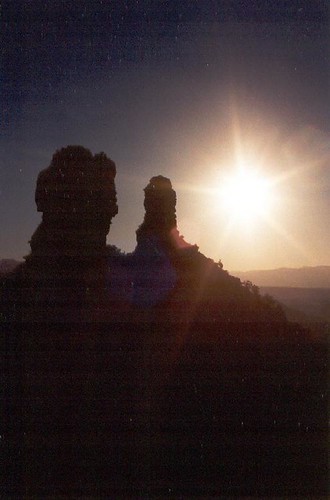
Chimney Rock Archaeological Area – the jewel of San Juan National Forest – shines a lot brighter today after President Obama signed a proclamation establishing the area and surrounding land as Chimney Rock National Monument. It is the United States’ 103rd national monument and the seventh to be managed by the U.S. Forest Service.
"Thousands of people come every year to experience the cultural, and spiritual significance of Chimney Rock," said Agriculture Secretary Tom Vilsack. "With President Obama's action and the strong support of the Native American community and others throughout the region, this new monument will bring new economic opportunity to Archuleta County and the Four Corners region as more visitors from around the world come to see this national treasure."
The move to designate Chimney Rock as a national monument follows years of grass root movement to expand the Chimney Rock Archaeological Area to that of a national monument. In 2007, the National Trust for Historic Preservation provided matching funds in 2007 under the Save America’s Treasures grant program and, by 2009, began the campaign to designate Chimney Rock a national monument. The National Trust labeled the Chimney Rock Archaeological Area as the single most important cultural site managed by the Forest Service.

“Chimney Rock holds great significance for the Native American tribes of southwestern Colorado and our neighboring states,” said Mark Stiles, supervisor of the San Juan National Forest. “As we manage for the many resources and benefits this site represents, we will pay close attention to the importance of Chimney Rock to our many tribal neighbors.”
The country’s newest national monument sits on 4,726 acres of the San Juan National Forest and is bordered by the Southern Ute Indian Reservation. The site was once home to the ancestors of the modern Pueblo Indians. Roughly 1,000 years ago, the Ancestral Pueblo People built more than 200 homes and ceremonial buildings high above the valley floor.

Chimney Rock Archaeological Area has 118 known archaeological sites. Chimney Rocky National Monument includes the area originally listed under the National Register of Historic Places, as well as more than 100 archaeological sites associated with the Ancestral Puebloans who lived in the area.
The dramatic geology of the monument stands in stark contracts to the majestic Ponderosa Pine forest and rolling savannah-like plains along the valley floor, combining to create a sweeping landscape. The Piedra River cuts along the edge of Peterson Mesa in the northern portion of the monument. Steep cliffs and expanses of exposed sandstone and shale are evidence of the violence of geologic time.
Peregrine falcons nest on the pinnacles and soar over ancient structures, the dramatic landscape, and the forested slopes of the Piedra and Stolsteimer Creek drainages, which are framed by the high peaks of the San Juan Mountains. Migratory mule deer and elk herds pass through the area each fall and spring as they have for thousands of years.
Annual visitation was 12,000 people prior to designation. As a national monument, that number is expected to significantly increase.
Chimney Rock Interpretive Association offers guided and self-guided tours and hosts special events, including pottery workshops, night sky programs, and Native American cultural gatherings.
A management plan for the monument will be developed to provide for the protection and interpretation of scientific and historic objects in the monument and for continued tribal and public access.

